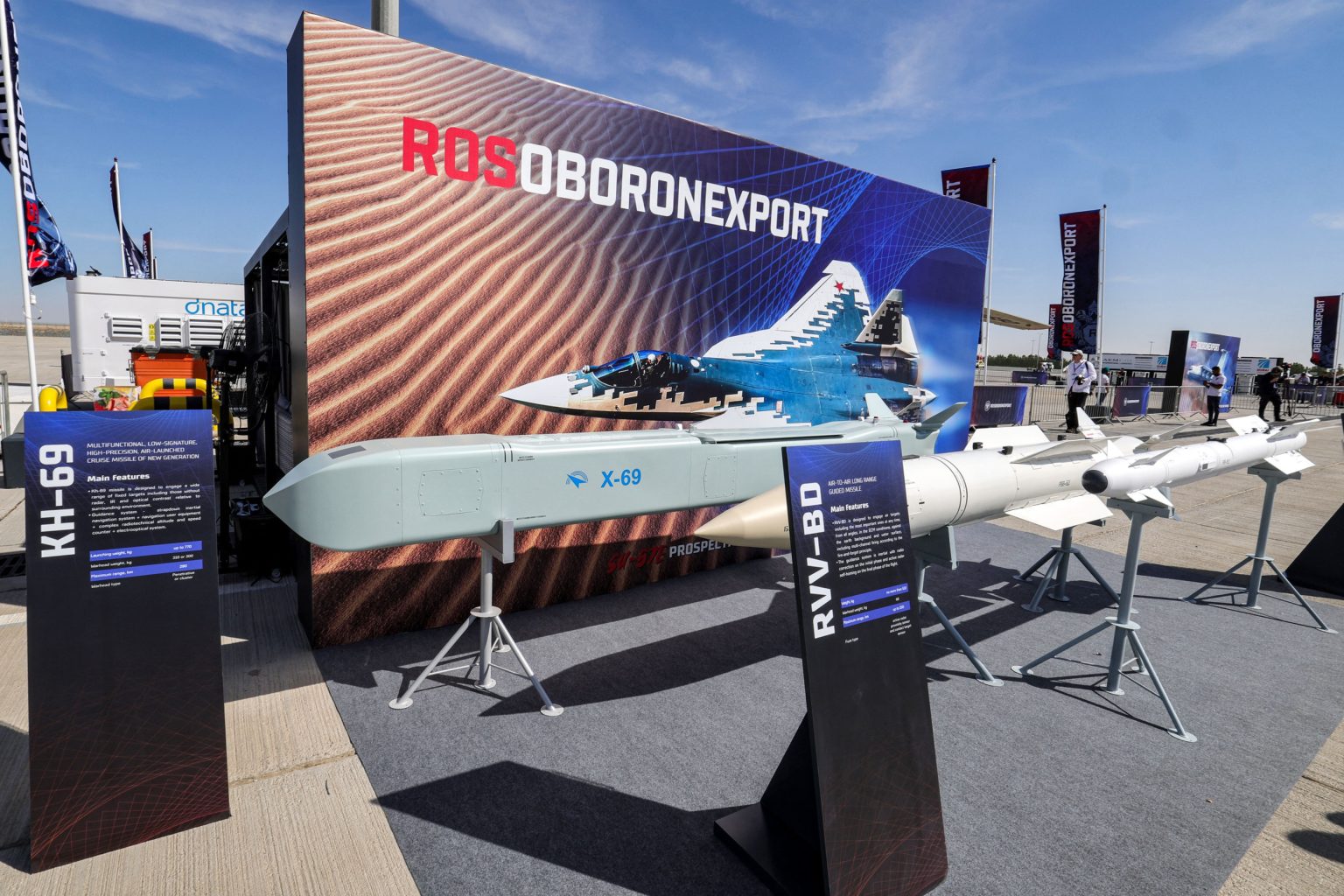Recent reports have indicated that Russia has deployed a new subsonic cruise missile called the Kh-69 in Ukraine, raising concerns about the weapon’s destructive potential. The Kh-69, although not as fast as the hypersonic ballistic missile called Kh-47M2 Kinzhal, is believed to be more dangerous due to its ability to cause significant damage to Ukraine’s infrastructure. The Institute for the Study of War (ISW) reported that the Kh-69 was used in strikes on the Trypilska Thermal Power Plant in Kyiv Oblast, highlighting its impact on critical energy facilities in the country. The missile can be launched from a distance of 240 miles away from targets, further expanding its reach compared to previous variants.
The Kh-69 can reportedly be launched from Sukhoi Su-34 and Su-35 tactical aircraft, making it a more versatile weapon than the previous Kh-59 cruise missile that Moscow has been using in recent weeks. Ukrainian Air Force spokesperson Major Ilya Yevlash noted that the Kh-69 is an improvement on the Kh-59 and that Russian forces are still dependent on accessing critical components to produce the missiles. He also mentioned that Ukrainian forces are working on developing countermeasures against the Kh-69, with Patriot air defense systems likely to be used for interception.
While the Kh-69 may not be as fast as the hypersonic Kinzhal missile boasted about by Russian President Vladimir Putin, its ability to cause significant damage to important infrastructure in Ukraine has raised concerns about its potential impact on the ongoing conflict. The German Defense Ministry has announced that it will supply another Patriot battery system to strengthen Ukraine’s air defenses in response to recent Russian air strikes. The deployment of new weapons like the Kh-69 highlights the evolving nature of the conflict and the ongoing efforts by both sides to gain an advantage in the region.
The use of the Kh-69 in strikes on critical energy infrastructure in Ukraine has drawn attention to the destructive capabilities of this subsonic cruise missile. While not as fast as hypersonic missiles like the Kh-47M2 Kinzhal, the Kh-69 poses a significant threat to Ukrainian targets due to its range and potential for causing extensive damage. The involvement of the Institute for the Study of War and reports from Ukrainian sources underscore the seriousness of the situation and the need for continued monitoring of Russian military activities in the region.
Reports of the deployment and use of the Kh-69 subsonic cruise missile in Ukraine have sparked concerns about the escalating conflict and the potential for increased destruction in the region. The development of new weapons by Russia, including the Kh-69, highlights the ongoing arms race and technological advancements in modern warfare. The response from Ukrainian and international defense authorities underscores the need for continued vigilance and preparedness to counter these evolving threats and protect critical infrastructure.
As the conflict in Ukraine continues to evolve, the deployment of advanced weapons like the Kh-69 subsonic cruise missile poses a significant challenge for both Ukrainian forces and international allies. The need for effective countermeasures and strengthened air defenses is crucial to mitigate the potential impact of these new weapons and protect civilian populations from harm. The ongoing efforts to monitor and address these threats reflect the complex nature of modern warfare and the importance of international cooperation in managing conflicts and safeguarding global security.
Keep Reading
Subscribe to Updates
Get the latest creative news from FooBar about art, design and business.
© 2026 Globe Timeline. All Rights Reserved.








